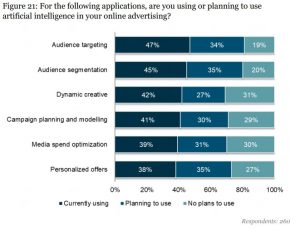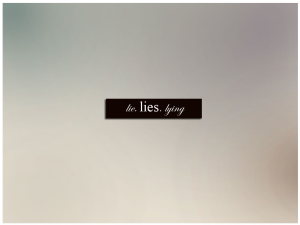When used correctly, marketing psychology can be an incredibly powerful tool. No matter what the type and size of your business are, marketing psychology can help you take your online campaigns to the next level. From branding to buyer behavior analysis, marketing psychology can be applied in different ways.
Indeed, even simply using a variety of statistics to guide your marketing decisions could be considered a way of using marketing psychology. Yet, truly effective psychological marketing uses a variety of techniques. Hence, here’s everything you need to know about marketing psychology and how you can start using it in your own campaigns.
What Is Marketing Psychology?
To put it simply, marketing psychology (or psychological marketing) is a method of using psychological techniques in your marketing efforts. Such an approach takes into account the irrational, unconscious decisions customers make to create a more nuanced and effective online campaign. It’s about finding patterns to make generalized assumptions, but it’s also about personalizing customer experiences.
Many marketers (and even non-marketers) already use marketing psychology to some extent. In fact, influencers use psychological techniques all the time. Big brands and small businesses alike benefit from psychological marketing tactics by predicting consumer behavior and even influencing it to an extent. In other words, psychological marketing is smarter and more efficient than traditional marketing.
Benefits of Marketing Psychology
Along with the points discussed above, marketing psychology has a number of benefits in terms of marketing, sales, and customer relations.
For instance, using buyer behavior analysis as part of your psychological marketing can help you to:
- Reduce customer stress while shopping
- Personalize customer experiences
- Streamline the shopping process
All three of these are essential to marketing in our time when companies are hyper-focused on their customers. Even small businesses launch targeted email campaigns and conduct surveys to find out what their customers want. By using marketing psychology in your marketing, sales, and other customer-related matters, you can find that special approach to your target audience and get even better results than before.
Marketing Psychology Statistics
If you aren’t completely certain of marketing psychology’s effectiveness, here are some statistics that demonstrate what it’s like in action and what results in it can give you:
- Personalized customer experiences can result in up to 49% of buyers making impulse purchases. Logically, companies want to focus more on improving their CX with the help of marketing psychology.
- According to a 1991 study, people are more afraid to lose something than they are motivated to gain something of the same value. This is precisely what FOMO (or Fear of Missing Out) is all about.
- Product reviews are said to be 12 times more trusted than any type of content a brand produces. This is exactly why social proof is considered to be such a powerful tool. User-generated content in general is quite effective.
- 57% of customers say that they will stop doing business with a company that has used their data in an unethical manner. When working with marketing psychology, you will be using large amounts of such data. Yet, the aim will be to use it in an ethical way to connect with your audience on a personal level.
- 91% of customers state that they are ready to reward brands for their authenticity. Though being unique and genuine at the same time is becoming increasingly difficult, using marketing psychology can be a solution.
- Customer decision-making is usually more nuanced than it may seem. Most people make up their minds on a subconscious level within the first 90 seconds of their first viewing of something. Moreover, around 62-90% of the judgment they make is based on color alone.
These statistics perfectly demonstrate why understanding how marketing psychology works and actively using it in your strategy is a necessity rather than a bonus to your main efforts. If you integrate psychological marketing techniques seamlessly, you could even make it work in symbiosis with your current strategy. In other words, don’t treat it as something foreign. Instead, accept it as a logical development of your business strategy.
Marketing Psychology Best Practices
The best way to use marketing psychology effectively is by understanding the way it works. Here are some of the most popular ones to start from:
- Loss Aversion: This theory says that most people prefer to avoid losing something instead of acquiring it. Loss Aversion is related to FOMO and Scarcity and Urgency Theory.
- Scarcity and Urgency Theory: This theory suggests that people tend to place more value on things that are believed to be rare rather than easily accessible. Likewise, creating urgency along with scarcity could result in FOMO (or Fear of Missing Out) when customers are afraid to miss out on a good bargain.
- Clustering: This theory states that because people have limited short-term memory space, they tend to group similar things together. When designing your website, group similar elements on it by placing them closer to each other, using lists, and so on.
- Social Proof: Using social proof can help you increase trust in your products by having other customers validate the value of these products. Social proof can be used in different forms on your website, on social media, and elsewhere.
- Tribe and Enemy: Also known as the Social Identity Theory, it states that a person’s sense of self is defined by their group membership. By dividing people into tribes, you can increase loyalty to their own tribe and increase the “discrimination” of other tribes (aka the enemy). This is particularly important for brand loyalty.
- Reciprocity Principle: This principle assumes that when a brand does something good for a customer, the customer will be more likely to return the favor and even increase cooperation.
- Baader-Meinhof Phenomenon: Also known as the “frequency illusion”, this phenomenon suggests that after you encounter something for the first time, you suddenly start seeing it everywhere. The first factor influencing this is selective attention – when you are struck by something new, you start keeping an eye out for it. The second is confirmation bias which only reinforces your belief that this something has become omnipresent overnight.
- Selective Perception: This theory states that customers process information based on what is most relevant to their needs and interests. The most effective way to use Selective Perception is by first conducting extensive research, surveys, and A/B testing to fully understand your customer lifestyles, needs, and interests.
- Option Reduction: This theory states that by reducing the options you offer to customers, you make it easier for them to make a choice which ultimately leads to more sales and conversions.
- Fitt’s Law: This model is related to UX and mouse movement. According to it, the easier it is to complete an action on your website, the more conversions and sales you will get. To make completing the action easier, you can either decrease the distance between the mouse and the target (i.e. buttons on your website) or increase the size of the target.
- Priming: This theory states that being exposed to one stimulus affects the way a person responds to the next stimulus. It can help you guide your customers and encourage them to perform certain actions or make particular choices. Priming can be used with Nurturing and the Nudge Theory.
- Anchoring: This theory states that people make decisions based on the first piece of information they receive. The initial price you set is the anchor while the displayed price (discounted, on sale, etc.) is what people will consider to be a good bargain even if it isn’t in reality.
- Nudge Theory: This technique involves subtly encouraging people to make the “right choice” by slightly guiding their decision-making process and actions. Most of the time, these subtle details are unnoticeable to your customers, but they can also be made more obvious and direct.
- Verbatim Effect: This effect states that people are more likely to remember the general idea of something they heard rather than the specific details of it. This is why it’s so important to have a good headline that represents your article’s main point.
- Information-Gap Theory: This theory states that when someone has a gap in knowledge of a particular topic they are interested in, they will take action to find out what they want to know.
- Pratfall Effect: This effect assumes that when figures of authority make mistakes and then either claim to be the underdog or use their flaws in some way, their attractiveness increases in the eyes of their audience.
- Price Sensitivity: This technique takes into account competitor prices and responses of different audience segments to different price levels to adjust your own prices. Just like with Selective Perception, Price Sensitivity requires extensive research before it can deliver the best results.
- Decoy Effect: This technique involves including an extra price point to incentivize customers to choose the most expensive option. It can be a particularly effective technique when used on landing pages with a limited number of options.
- Foot-in-the-Door Technique: This technique involves starting small to get to something bigger. For example, when you offer a free trial, customers who start from it will be more likely to eventually purchase your paid option.
- Color Psychology: Color plays an integral role in customer decision-making and is essential for effective branding. For instance, the Von Restorff Effect states that when something stands out, it will get more attention and will be better remembered. Thus, using colors to highlight certain elements on your website will make them more memorable. Likewise, using fancy names for colors makes these colors more attractive (e.g. “mocha” rather than “brown coffee”).
Marketing Psychology Examples
The best way to see how these psychological marketing concepts work in practice is to look at examples of them in action, so here are some to give you a better idea of how marketing psychology works:
- Tommy Hilfiger creates a sense of Scarcity and exclusivity by clearly stating the status of certain products as “exclusive”. Moreover, the brand knows that its audience values exclusivity and quality in its products.

- Dr. Martens uses Social Proof to encourage customers to make a purchase. In this case, using a “best seller” category can be seen as a form of social proof because it shows which products customers favor. Other types of social proof you can use include UGC, reviews and testimonials, influencer marketing, etc.

- The Body Shop uses the Reciprocity Principle by giving out free samples. This technique can take on other forms, including free advice and trial periods.

- Jack Wills uses Selective Perception to guide their customers. After performing extensive research on what their customers’ lifestyles are, the brand is able to craft copy that will cater to their customers’ specific needs.

- Molekule uses Option Reduction to take the stress out of shopping. They use a minimalist design in conjunction with a very limited number of options. This makes shopping more enjoyable and encourages customers to make a purchase faster.
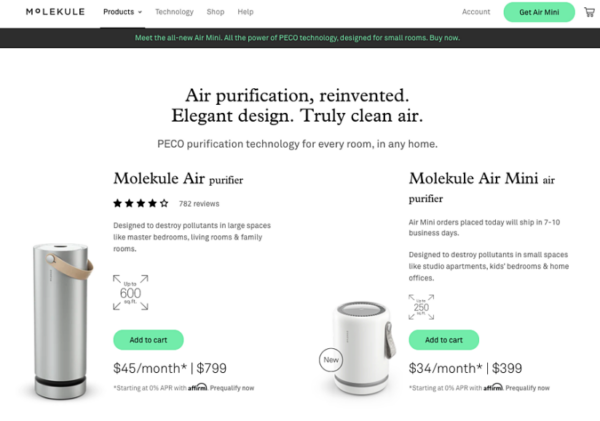
- Lush uses Nudge Theory to create FOMO and utilize Scarcity. They add “limited edition” tags to signal to their audience that certain products on offer will soon be sold out because they aren’t as easily available as others. This encourages customers to purchase these particular limited products.
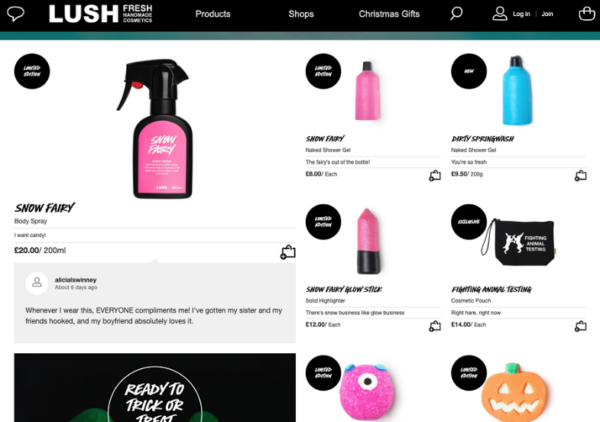
- ASOS uses Price Sensitivity to appeal to their target audience segment made up of students. The brand realizes that students might have tighter budgets than their other customers. That’s why they offer a discount specifically for students.
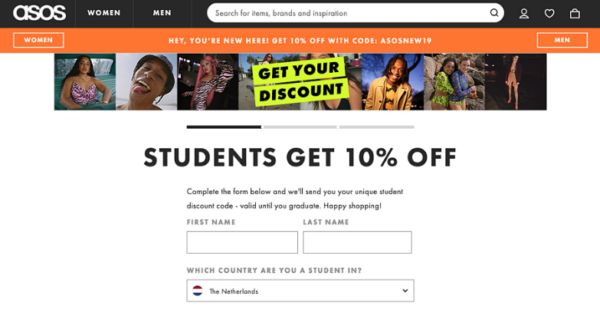
Conclusion
So, what’s the takeaway? Most importantly, marketing psychology is not a single tactic. It is a number of techniques you can use to elevate your online campaigns. You can still rely on traditional marketing tactics, but you should also adapt to the digital age by adopting marketing strategies deeply rooted in psychology.
Keep in mind that the digital sphere is still evolving. New findings about buyer behavior and decision-making are published every year. Consequently, staying up to date with the latest discoveries in marketing psychology is essential to using it effectively. Apply the tips in this article to your own online campaigns and start reaping the results of the seeds you planted.
Digital & Social Articles on Business 2 Community
(251)


